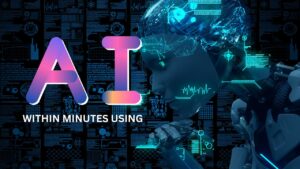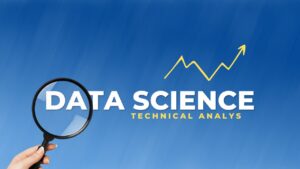How Data Science is related to Textile
Introduction: The textile industry operates within a dynamic landscape shaped by multifaceted elements like market analysis, trend forecasting, product development, supply chain optimization, sustainability initiatives, technological advancements, and consumer-driven customization. Market analysis in textiles scrutinizes supply, demand, and evolving preferences, while trend forecasting anticipates upcoming styles and materials. Product development, with its focus on aesthetics, functionality, and market demands, plays a pivotal role, alongside supply chain optimization, sustainability efforts, predictive maintenance, and textile testing. Moreover, the rise of personalization and customization, enabled by technological innovations, caters to individual preferences, fostering stronger consumer connections with textile products. How Data Science is related to Textile.

Here some key points on How Data Science is related to Textile.
Market Analysis and Trend Forecasting: Market analysis in the textile industry involves examining various factors influencing supply, demand, and consumer preferences for fabrics, clothing, and related products. This analysis encompasses studying raw material costs, manufacturing technologies, global trade patterns, and evolving consumer trends. It includes assessing demographic shifts, fashion cycles, sustainability concerns, and economic conditions affecting consumer spending.How Data Science is related to Textile.
Trend forecasting in textiles entails predicting upcoming styles, colors, patterns, and materials that will resonate with consumers. This involves analyzing fashion shows, consumer behavior, social media trends, and historical data to anticipate the next big trends in the industry. Trend forecasters interpret cultural, societal, and environmental influences to predict what fabrics, designs, and clothing styles will gain popularity in the market. Accurate trend forecasting assists businesses in developing and marketing products aligned with consumer preferences, enabling them to stay competitive in the dynamic textile market.How Data Science is related to Textile.
Product Development and Design: Product development and design for textiles involves the conceptualization, creation, and refinement of textile-based products, considering aesthetics, functionality, and market demands. It begins with research into consumer trends, materials, and technology. Designers ideate, sketch, and develop prototypes, considering factors like fabric choice, color, texture, and pattern. They collaborate with textile engineers, manufacturers, and marketers to ensure feasibility, cost-effectiveness, and market viability.
Key stages include concept development, material sourcing, prototyping, testing, and final production. Advanced software aids in design visualization and pattern creation, optimizing the design-to-production process. Sustainable practices and innovation in eco-friendly materials are increasingly crucial in textile product development.
Successful product development in textiles hinges on understanding user preferences, technological advancements, and industry trends, ensuring the final product aligns with consumer needs while meeting quality and ethical standards. Constant adaptation to market changes remains essential for competitiveness and customer satisfaction.How Data Science is related to Textile.
Supply Chain Optimization: Supply chain optimization in textiles involves streamlining the flow of materials, information, and processes to enhance efficiency, reduce costs, and meet consumer demands. It starts with raw material procurement, weaving through production, distribution, and finally reaching the end consumer. Optimization focuses on minimizing waste, reducing lead times, and improving overall operational performance.How Data Science is related to Textile.
Strategies like lean manufacturing, advanced forecasting methods, inventory management systems, and implementing digital technologies (like IoT, AI, and data analytics) aid in tracking and managing the entire supply chain. Collaborations with suppliers and partners ensure transparency and reliability, reducing delays and improving quality control.
Moreover, sustainable practices, ethical sourcing, and eco-friendly initiatives are increasingly integrated into supply chain optimization, aligning with consumer demands for environmentally responsible products. Continuous assessment, adaptation to market shifts, and leveraging technology innovations remain integral to achieving an efficient and responsive textile supply chain.How Data Science is related to Textile.
Sustainability and waste Reduction: Sustainability in the textile industry revolves around minimizing environmental impact and promoting ethical practices throughout the production, use, and disposal of textiles. Waste reduction is a critical component of this effort. The textile sector generates vast amounts of waste through production leftovers, excessive water usage, and discarded garments. To address this, sustainable practices like using organic or recycled materials, employing eco-friendly dyes and manufacturing processes, and implementing efficient recycling systems are crucial.
Technological advancements facilitate recycling textiles into new fabrics or products, reducing the reliance on raw materials. Additionally, fostering a circular economy by encouraging clothing repair, resale, and upcycling extends the lifespan of garments, reducing the disposal of textiles in landfills. Consumer awareness and responsible buying habits also play a pivotal role in driving sustainability in the textile industry. Collaborative efforts among manufacturers, consumers, and policymakers are essential to achieve a more sustainable and waste-reduced textile industry, promoting longevity and eco-friendliness in fashion and textiles.How Data Science is related to Textile.
Predictive maintenance for Machinery: Predictive maintenance Predictive maintenance in textile machinery involves using data analytics, machine learning, and sensor technology to anticipate potential issues and perform maintenance tasks before equipment failures occur. By collecting and analyzing data from various sensors embedded in textile machinery, patterns and anomalies can be identified, enabling predictive models to foresee potential breakdowns or inefficiencies.How Data Science is related to Textile.

This proactive approach helps textile manufacturers schedule maintenance during planned downtime, reducing unexpected production halts and minimizing costly repairs. Predictive maintenance optimizes equipment performance, prolongs machinery lifespan, and enhances overall operational efficiency. It also aids in predicting optimal replacement times for parts, thereby reducing unnecessary part replacements and minimizing resource wastage. Ultimately, by implementing predictive maintenance strategies, textile manufacturers can improve productivity, reduce downtime, and lower maintenance costs while ensuring consistent and reliable machinery performance.How Data Science is related to Textile.
Textile Testing and Analysis: Textile testing involves assessing various properties of textiles to ensure quality, durability, and performance. In the realm of data science, this process is enhanced through statistical analysis and machine learning techniques. Data science plays a pivotal role in textile testing by processing and analyzing large volumes of data gathered from various tests, such as tensile strength, colorfastness, and fabric composition analysis.How Data Science is related to Textile.
Through data science, patterns, trends, and correlations within the test results can be identified, aiding in predictive modeling for textile behavior under different conditions. Algorithms can be employed to predict fabric performance, optimize manufacturing processes, and ensure compliance with industry standards. Utilizing data-driven insights, manufacturers can improve product quality, reduce defects, and innovate textile designs, ultimately enhancing consumer satisfaction and market competitiveness in the textile industry as well as Digital Marketing industry.

Personalization and customization: Personalization and customization in textiles refer to the tailored approach of creating unique and individualized textile products to meet specific preferences or needs of consumers. Personalization involves adapting textile items according to individual tastes, such as adding monograms, names, or unique designs to clothing, accessories, or home textiles. This customization caters to the customer’s personal style and preferences, enhancing their emotional connection with the product.How Data Science is related to Textile.
On the other hand, customization in textiles involves altering aspects like size, color, fabric, or style of a textile product based on individual requirements. This might include made-to-measure clothing, where measurements are taken to create a garment that fits perfectly.How Data Science is related to Textile.
These approaches are increasingly facilitated by technology, including digital printing, computer-aided design, and manufacturing processes. They offer consumers a sense of exclusivity, allowing them to express their identity through personalized or customized textile items, leading to enhanced satisfaction and loyalty in the consumer market.
The textile industry, a multifaceted domain, operates at the intersection of market analysis, innovative trends, sustainable practices, and consumer-centric approaches. To thrive in this competitive landscape, it is imperative to understand and adapt to market shifts, utilize trend forecasting for proactive strategies, prioritize sustainable development, optimize supply chains, employ predictive maintenance, and leverage data-driven insights for product enhancement. Embracing personalization and customization further reinforces consumer engagement and loyalty.How Data Science is related to Textile.

Quality control and inspection: Quality control and inspection in the textile industry undergo a transformative shift through data science integration. Data-driven methodologies, such as machine learning and statistical analysis, revolutionize how textile quality is monitored and ensured. Machine learning algorithms, trained on extensive datasets comprising images of textile materials, enable automated defect detection. These algorithms swiftly identify irregularities like weaving faults, stains, or fabric imperfections from real-time production line data, facilitating immediate corrective actions.How Data Science is related to Textile.
Moreover, statistical process control techniques utilize data analytics to monitor production stages, swiftly detecting deviations from predefined quality standards. Predictive maintenance, powered by data analytics, anticipates equipment issues by analyzing sensor data, preempting potential faults and maintaining uninterrupted production.
Data science also empowers quality analytics, processing quality-related metrics and production variables. This analysis pinpoints root causes of quality issues, driving process improvements for enhanced overall product quality. Real-time monitoring through IoT devices and sensors ensures immediate adjustments during manufacturing, maintaining consistent quality.How Data Science is related to Textile.
Furthermore, data-driven supplier and material analysis aid in optimal supplier selection and sourcing, enhancing raw material quality and overall product excellence. Ultimately, the integration of data science elevates textile quality control and inspection, ensuring higher standards, increased efficiency, and reduced defects across the manufacturing process.
Real-time Monitoring and Feedback: Real-time monitoring and feedback loops are crucial components in data science, particularly in the context of Textile Relations. Textile Relations involve the analysis and understanding of patterns, connections, and interactions within complex data structures, similar to interwoven threads in a textile. Real-time monitoring refers to the continuous observation of data streams or processes as they occur, enabling immediate detection of changes or anomalies.How Data Science is related to Textile.
In the realm of Textile Relation with Data Science, real-time monitoring involves the constant analysis of intricate data interdependencies, identifying correlations and patterns as they evolve. Feedback loops play a pivotal role by utilizing insights from this monitoring to refine algorithms, models, or systems. They facilitate an iterative process wherein observed data influences the adjustments or improvements made in real-time, enhancing the accuracy and relevance of subsequent analyses. How Data Science is related to Textile.
These loops enable dynamic adaptations, ensuring that Textile Relation models remain responsive and adaptable to changing data patterns or contexts. By integrating real-time monitoring and feedback loops into Textile Relation in Data Science, organizations can derive actionable insights swiftly, optimize decision-making processes, and create more robust systems capable of handling complex data relationships effectively. Please check another blog in here.